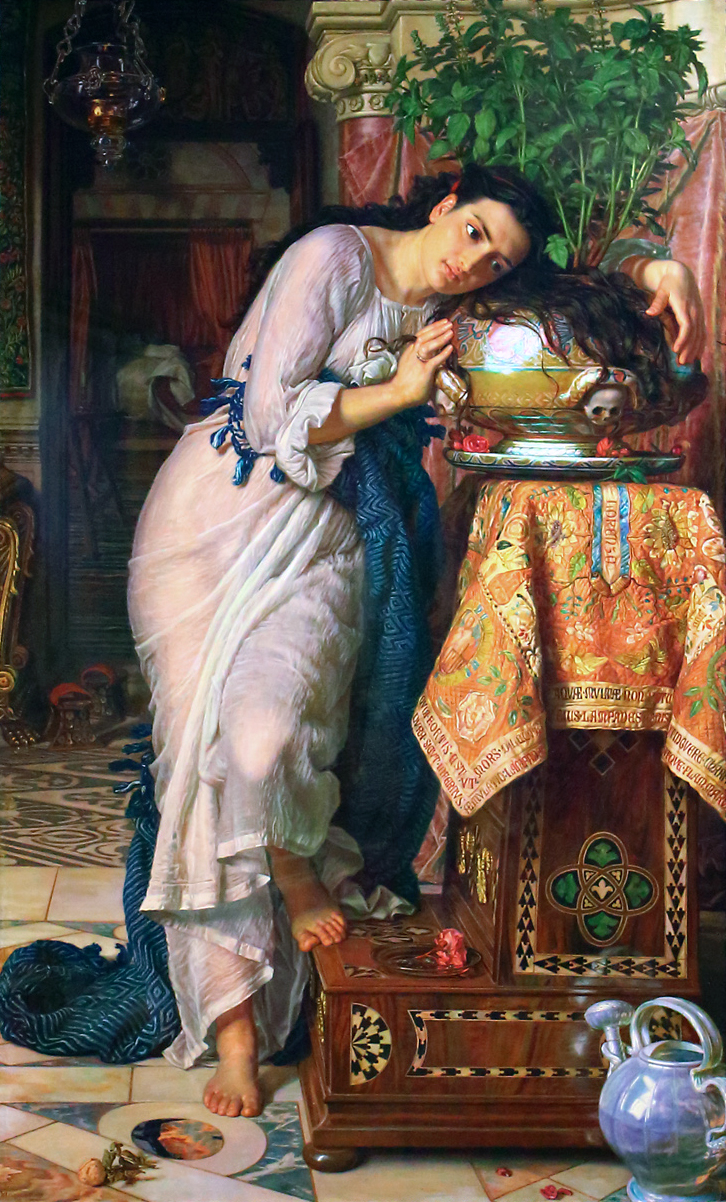
William Holman Hunt, Isabella or the Pot of Basil, 1866-8, retouched 1886, oil on canvas, 187 x 116.5 cm (Laing Art Gallery, Newcastle Upon Tyne)
One of the things that initially drew the Pre-Raphaelites together was a shared admiration for the writings of John Keats. Throughout their careers, subjects from Keats’ poems frequently supplied the narratives for the paintings done by the members of the PRB (Pre-Raphaelite Brotherhood), but William Holman Hunt’s Isabella or the Pot of Basil (1866-8) is an innovative interpretation of the subject.
Keats’ Isabella or the Pot of Basil (published in 1820) is based on a story from the Renaissance author Boccaccio’s Decameron. It explores the traditional theme of star-crossed lovers. The poem tells the tragic tale of Isabella and Lorenzo, who is employed by Isabella’s brothers. Unhappy with the blossoming love between the pair, the brothers send Lorenzo on a trip and have him killed, but Lorenzo appears to Isabella as a ghost and tells her where to find his body. Isabella digs up the body, cuts off Lorenzo’s head and buries it in a pot of basil, which she waters with her tears. Eventually her brothers become suspicious, steal the pot, and flee. Isabella goes mad with grief and dies. Like the narratives of so many Victorian paintings, the course of true love does not run smoothly.
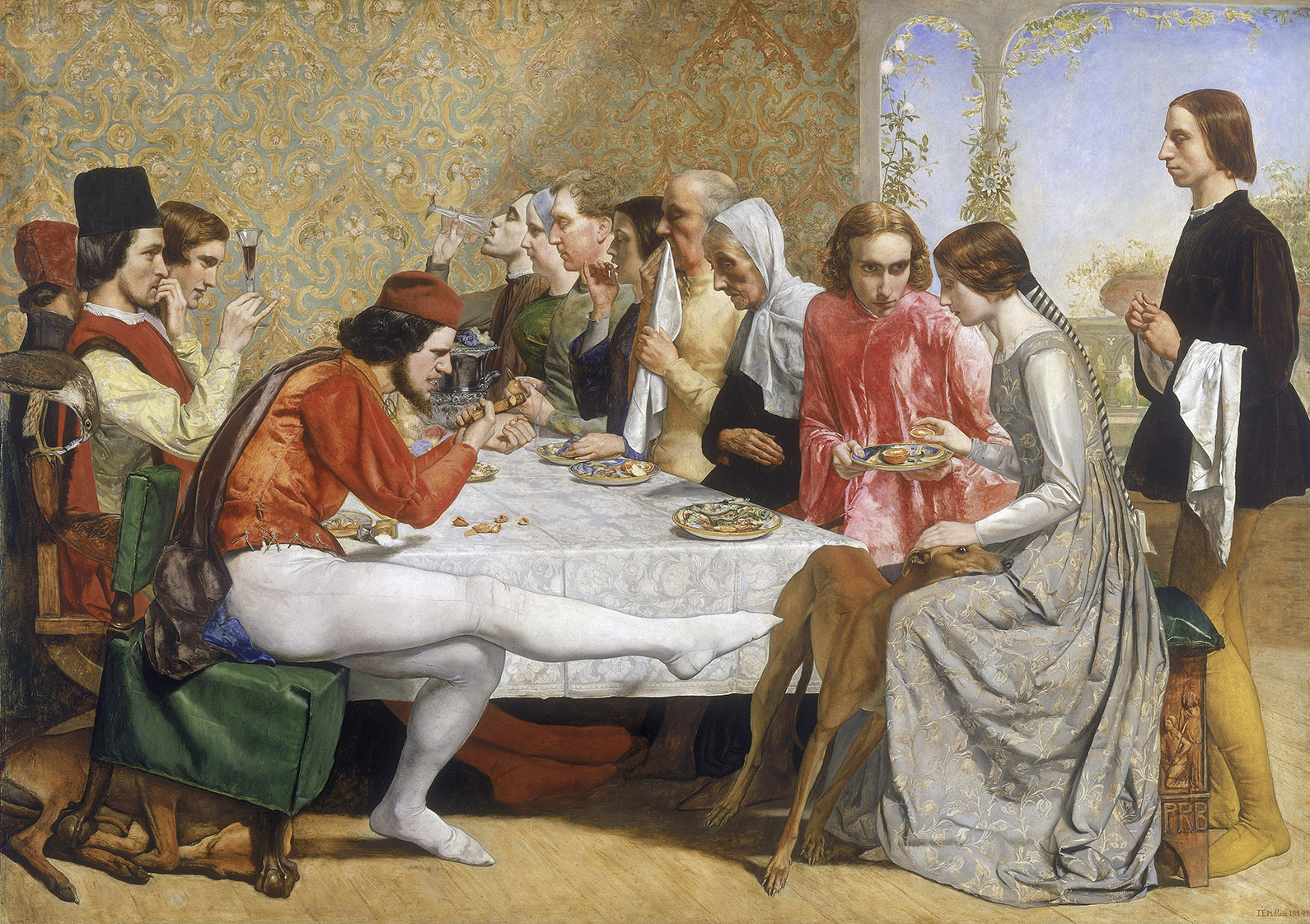
John Everett Millais, Isabella, 1848-9, oil on canvas, 142.8 x 103 cm (Walker Art Gallery, Liverpool)
The subject had been treated by John Everett Millais in 1848-9 in one of his first forays into Pre-Raphaelite painting. Millais’ painting shows the lovers, oblivious to the others around them as Lorenzo shyly offers Isabella a blood orange on a plate. Isabella looks demurely downward while one of her brothers kicks a dog in fury over their obvious regard for each other. Millais’ Isabella is a stunning example of the mastery of the medieval detail for which the Pre-Raphaelites are known, and the pale, thin face of Isabella is reminiscent of a Renaissance Madonna.
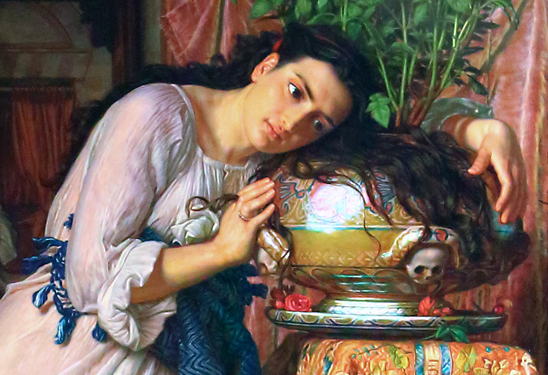
William Holman Hunt, Isabella or the Pot of Basil, 1866-8, retouched 1886, detail, oil on canvas, 187 x 116.5 cm (Laing Art Gallery, Newcastle Upon Tyne)
In contrast, Hunt’s image of an exotic, dark-haired Mediterranean-looking woman is at odds both with the earlier painting and the description in Keats’ poem. Here Isabella stares into space, her arms tenderly embracing a pot decorated with skulls, which Hunt based on examples he had seen in Florence. She is clad in a gauzy, clinging nightdress emphasizing her curves, and her feet are bare, creating a far more sensual version of the subject. Hunt’s Isabella also appears to be a more robust woman than the typical pale, fragile looking women often found in Victorian art. Ever practical, Hunt said that he wanted her to look as if she was actually capable of cutting off a head.
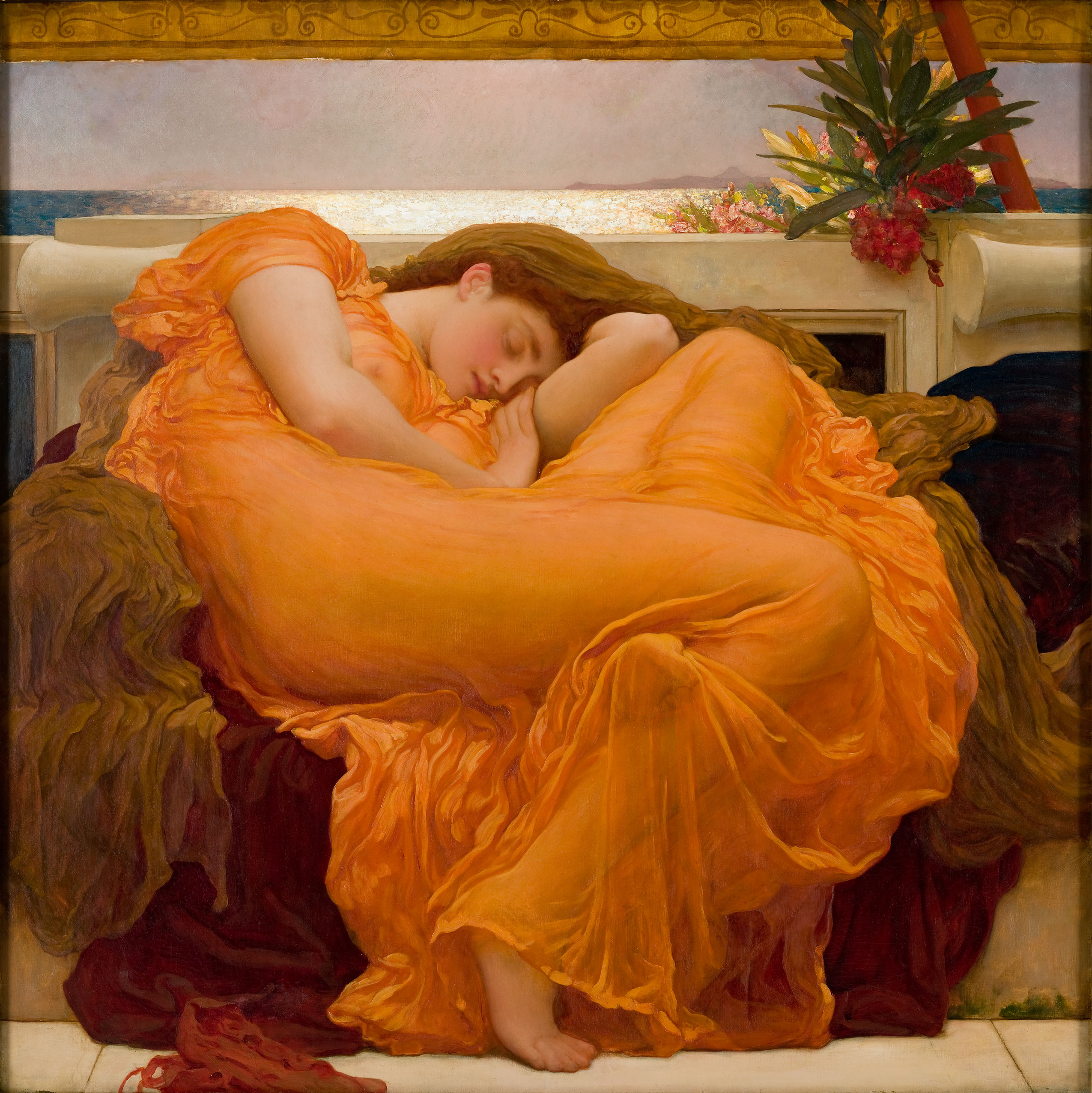
Frederic Lord Leighton, Flaming June, oil on canvas, 120 x 120 cm (Museo de Arte de Ponce, Puerto Rico)
Although the attention to detail found in Hunt’s earlier Pre-Raphaelite paintings remains, his inclusion of vaguely foreign elements such as the inlay of the furniture, the elaborate tapestry on which the pot sits and the richly designed tile floor come more from the interest in the exotic found in paintings of the Aesthetic Movement. His approach to Isabella and the Pot of Basil has as much in common with later Victorian artists such as Frederic Lord Leighton and his paintings of classically dressed single female figures, as it does with his Pre-Raphaelite roots.
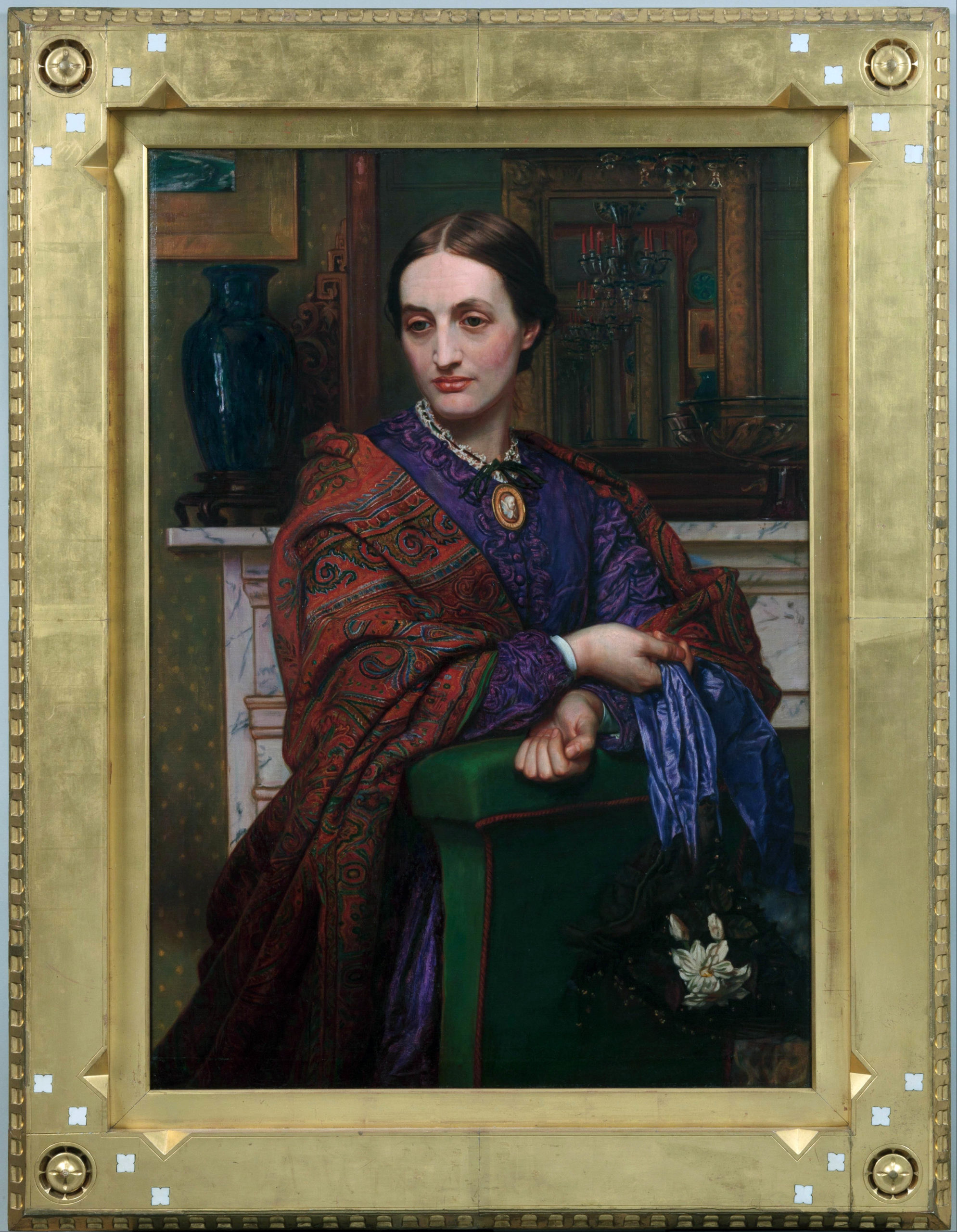
William Holman Hunt, Fanny Waugh Hunt, oil on canvas, 104 x 73 cm (Toledo Museum of Art)
The painting was begun in Florence, where Hunt and his new wife, Fanny Waugh, were stopped while traveling in 1866. In October Fanny gave birth to a son but contracted a fever and died in December. Hunt used Fanny’s likeness as the model for his Isabella and her mournful gaze may be an expression of his own grief. After working on the painting for some time, Hunt finally exhibited the work in 1868 at the showroom of the art dealer Ernest Gambart, where it was generally well received by critics.
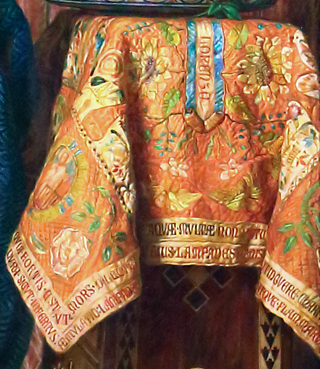
William Holman Hunt, Isabella or the Pot of Basil, 1866-8, retouched 1886, detail, oil on canvas, 187 x 116.5 cm (Laing Art Gallery, Newcastle Upon Tyne)
Throughout his career, Hunt stayed closest to the aesthetic of the Pre-Raphaelite Brotherhood in his attention to detail and his insistence on narrative content. His use of the Keats poem and his masterful treatment of small things, such as the minutia of the stitching on the beautiful tapestry, point to his continuing adherence to the ideals of the PRB, while his re-interpretation of the heroine shows his continued growth as an artist.
Additional resources:

